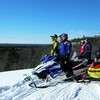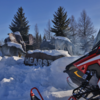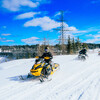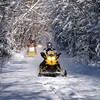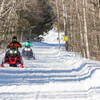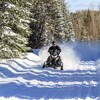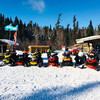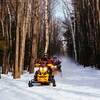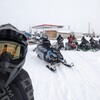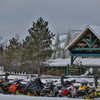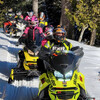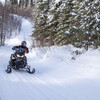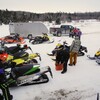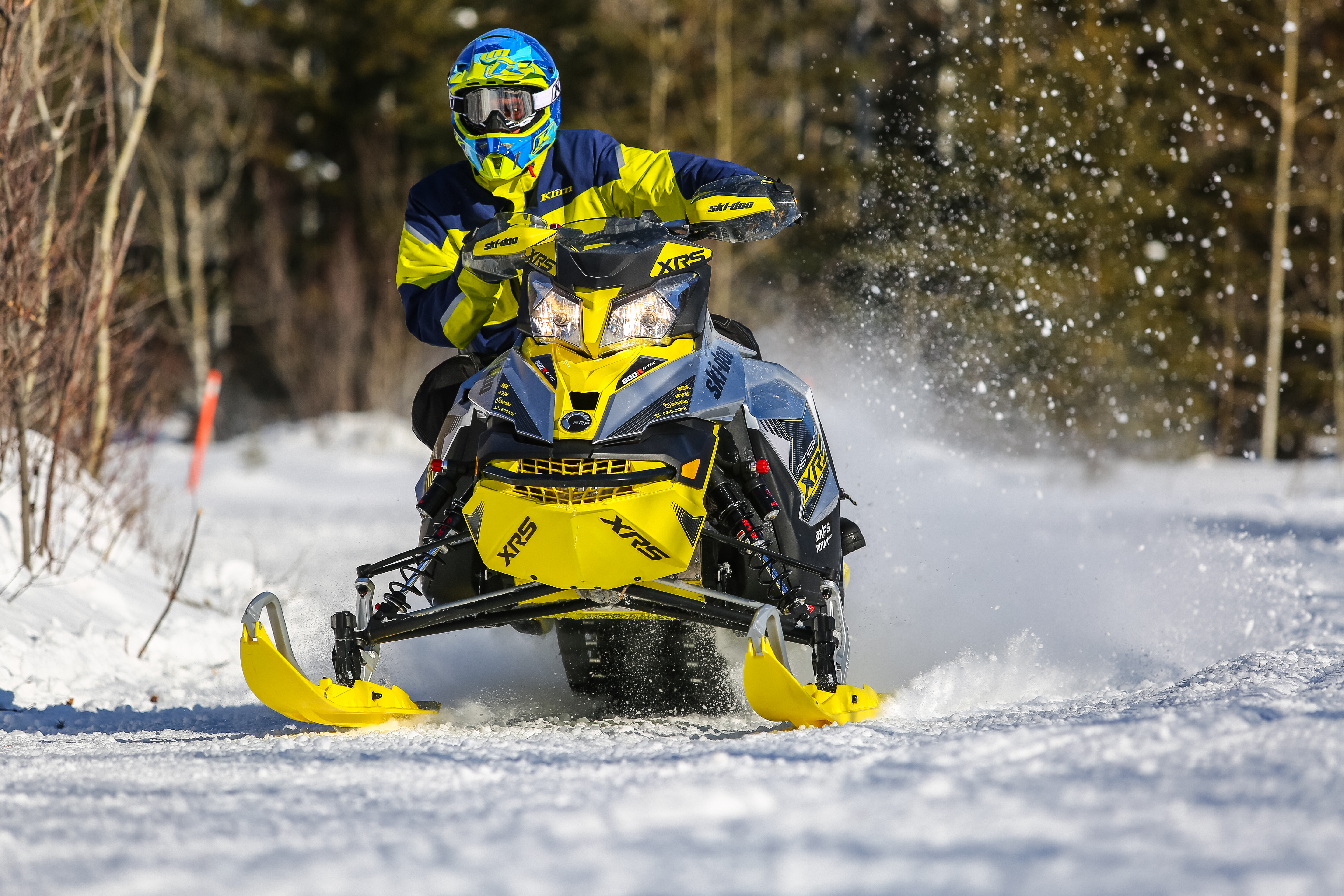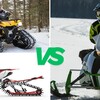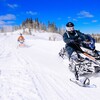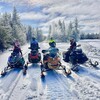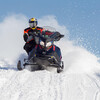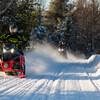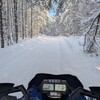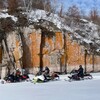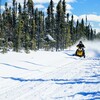
Snowmobile Trailering: Do You Know How to Do it Safely?
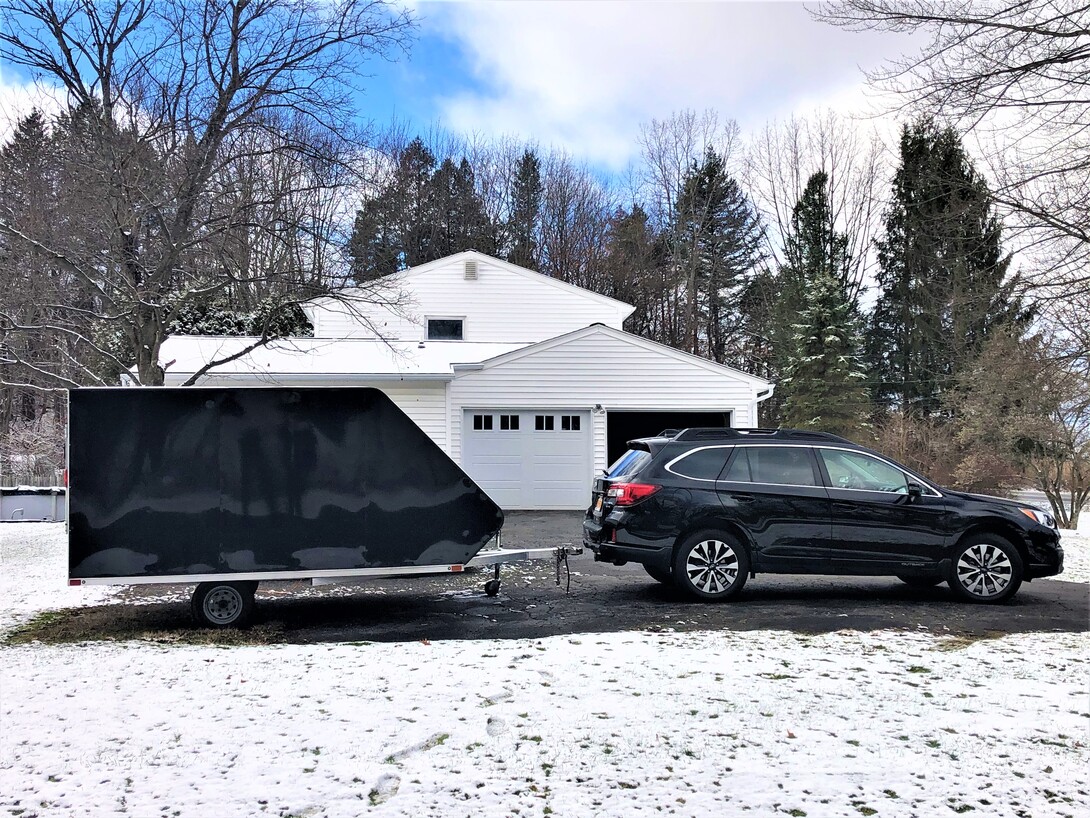
As we celebrate Ontario Snowmobile Safety Week, what better time to discuss safe travels and trailering, when heading north to a lodge or resort for some recreational riding on OFSC Prescribed Trails
A higher volume of snowmobile enthusiasts on the highway means that safe snowmobile trailer travel is more important than ever. Greenhorn snowmobile enthusiasts not accustomed to operating a sled may also be novices at trailering said snow machine behind their vehicle. So once you've purchased your permit, checked the OFSC Interactive Trail Guide, and planned your trip to a snowmobile-friendly lodge, loop, or region, it's time to make sure you get there safely!
Before hitting the road this week on your annual winter sledding getaway, let’s celebrate International Snowmobile Safety Week by reviewing proper snowmachine trailer techniques.
how to tie down your Sled in a trailer
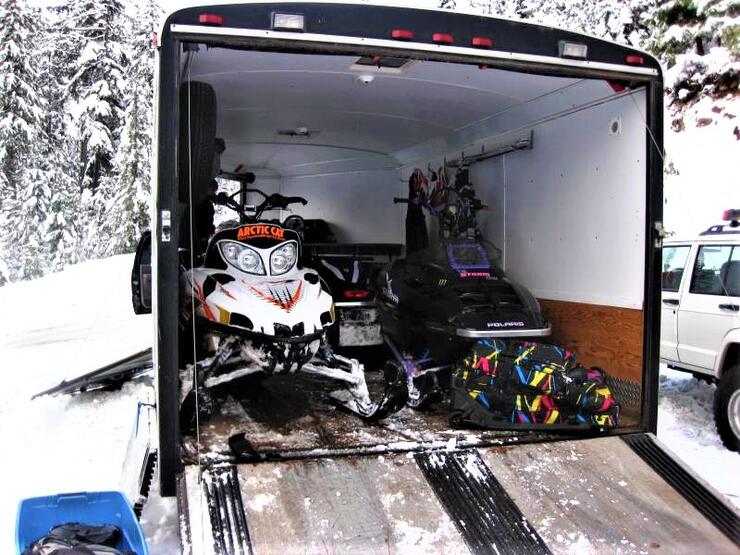
Proper snowmobile tie-down is of utmost importance for safer travels. The basic rule of thumb for securing a sled on a trailer is 3 anchor points minimum and 4 is better. Use ratchet strap tie-downs instead of rope or bungee cords, since they can stretch or loosen. Consider special modified snow machine tie-down mechanisms such as the Super Clamp, to keep your machine tightly anchored on your trailer.
what Snowmobile trailer options are there?
1. Flatbed Trailer
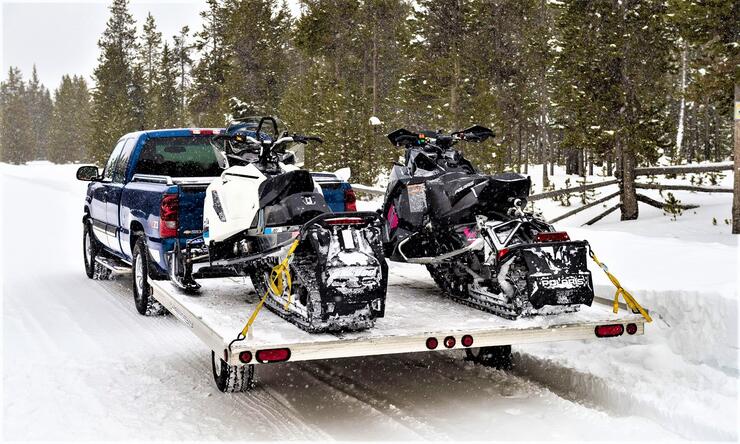
Flatbed trailers are very common for snowmobile transport but require care and vigilance when operating. If the trailer has fold-down ramps, remove the safety pins lower into position slowly and ensure they are locked. Drive the slide up the ramp slowly and let off the gas as the skis reach the trailer bed, slowly drive the snowmobile forward until it is over the location to be tied down. Some flatbeds come with a bar to secure the machine to the trailer. A rod may extend across the skis to be held in place, snapped or locked on the outside. Be sure to position your machine so that 10% tongue weight is achieved with your trailer load. (See Basic Trailer Towing safety)
2. Tilt trailer
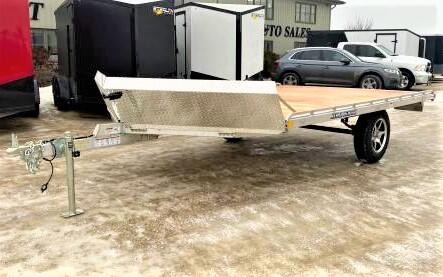
Tilt trailers are similar to flatbeds, but they tilt in the middle instead of using ramps to load your snow machine. Always use caution when loading your machine onto a tilt-bed trailer. Mishaps can result from driving too fast into the trailer bed, which may cause the machine to go up over the trailer and hit the back of the tow vehicle. After loading and securing your sled, make sure the trailer bed is tightly latched. Check your load often during your travels to ensure the snowmobiles remain securely fastened on the trailer.
3. Enclosed Flatbed Trailers
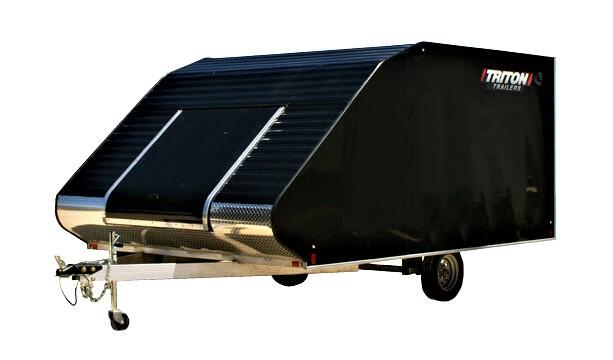
Enclosed trailers, as the name implies, are completely covered keeping your machine out of the elements but also tend to be larger, and bulkier, than flatbeds or tilt bed trailers. Enclosed models usually have D-rings installed on the trailer floor for attaching ratcheting tie-down straps, to secure the snowmobile down in the front and rear. When you have finished loading the enclosed trailer, check that all straps are tight, confirm the position of your sled to ensure 10% tongue weight, fold the door up and secure it.
what are some Basic trailing/towing safety tips?
confirm towing capacity and dry weight
If you have never towed a snowmobile trailer before, you must confirm that your vehicle ‘towing capacity’ is adequate for the snow machine trailer you wish to haul. Your trailer’s dry weight should never be more than 90% of your vehicle’s towing capacity, and preferably less. For example, if your tow vehicle (usually an SUV or truck) has a towing capacity of 5000 pounds, never tow a trailer with a dry weight heavier than 4500 pounds at the absolute maximum, and preferably less. The heavier you go, the more dangerous it is.
get a Weight distribution hitch
Hauling multiple snow machines at one time has its own set of safety requirements and hitching accessories. One crucial piece of equipment for anyone towing heavier trailers or multiple machines is a weight-distribution hitch. This specialized hitch removes weight from your trailer tongue and distributes it more evenly and safely. Keep in mind that trailer tongue weight should be around 10% of your total trailer weight. If, for example, your loaded snow machine with trailer has a weight of 3500 pounds, a good rule of thumb is 300 pounds of tongue weight.
learn about Torsion/sway bars
A weight distribution system comes equipped with two heavy torsion bars chained in place to improve towing and they work, big time! Weight distribution hitches also come with a sway bar attachment, which secures your tow vehicle to the trailer and prevents fishtailing. The sway bar is a braking system that keeps your trailer tracking smooth and straight, just one more aspect to good safety.
Safe travels!
By following these few basic safety tips, your winter snowmobile travels will undoubtedly be safer and more enjoyable, for you and your family.
See you all in the great outdoors!
Recommended Articles

The Complete List of Snowmobile Events in Ontario 2025-2026
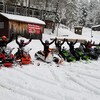
The Best Snowmobile-Friendly Lodges
Snowmobiling Winter Weather Forecast 2025-2026

I Rode the Explorers Snow Tour in Ontario and Here’s What It Was Like

Why Ontario is One of the Best Snowmobile Destinations in the World
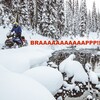
11 TikToks That Prove Ontario is the Best Place To Go Snowmobiling

5 Weekend Snowmobile Getaways Near the GTA
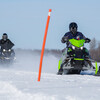
31 Ways To Get In The Know About Snowmobile Trail Riding in Ontario

A Beginner's Guide to Snowmobile Lingo

